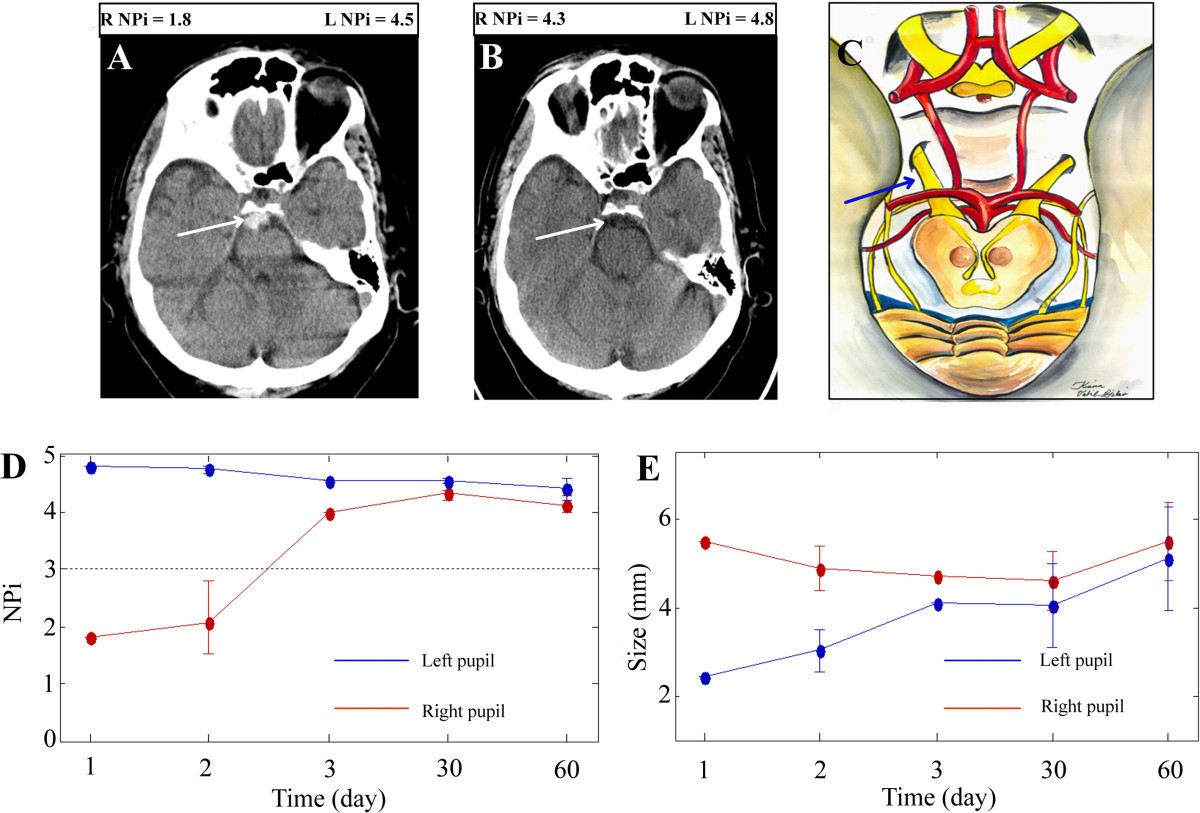Figure 3

Complete return of pupillary function: relationship of NPi scores, pupillary asymmetry, and brain images. Patient two is a 67-year-old male taking Coumadin who suffered a ground level fall. Initial CT studies (A) revealed a hemorrhage in the prepontine cistern (white arrow denotes blood) and one month follow-up CT studies (B) showed dissipation of the hemorrhage and a visible third nerve (white arrow). Initial IP NPi scores (D, time 1 day) and IP size measurements (E, time 1 day) show third nerve dysfunction on the right side and asymmetry between the pupils. By day three NPi scores (D) have significantly increased and the pupils are symmetric (E). The top, right schematic (C) depicts the anatomy of the third cranial nerves as they leave the midbrain and enter the cisternal space enroute to the cavernous sinus. Blue arrow (C) indicates the presumed region of third nerve compression by the blood clot. Note: the time = 0 days represents the average of hourly measurements that were done during the first few hours that the patient was in the ICU. The measurements taken at the other time points were done in the NeuroTrauma clinic and represent an average of three measurements.